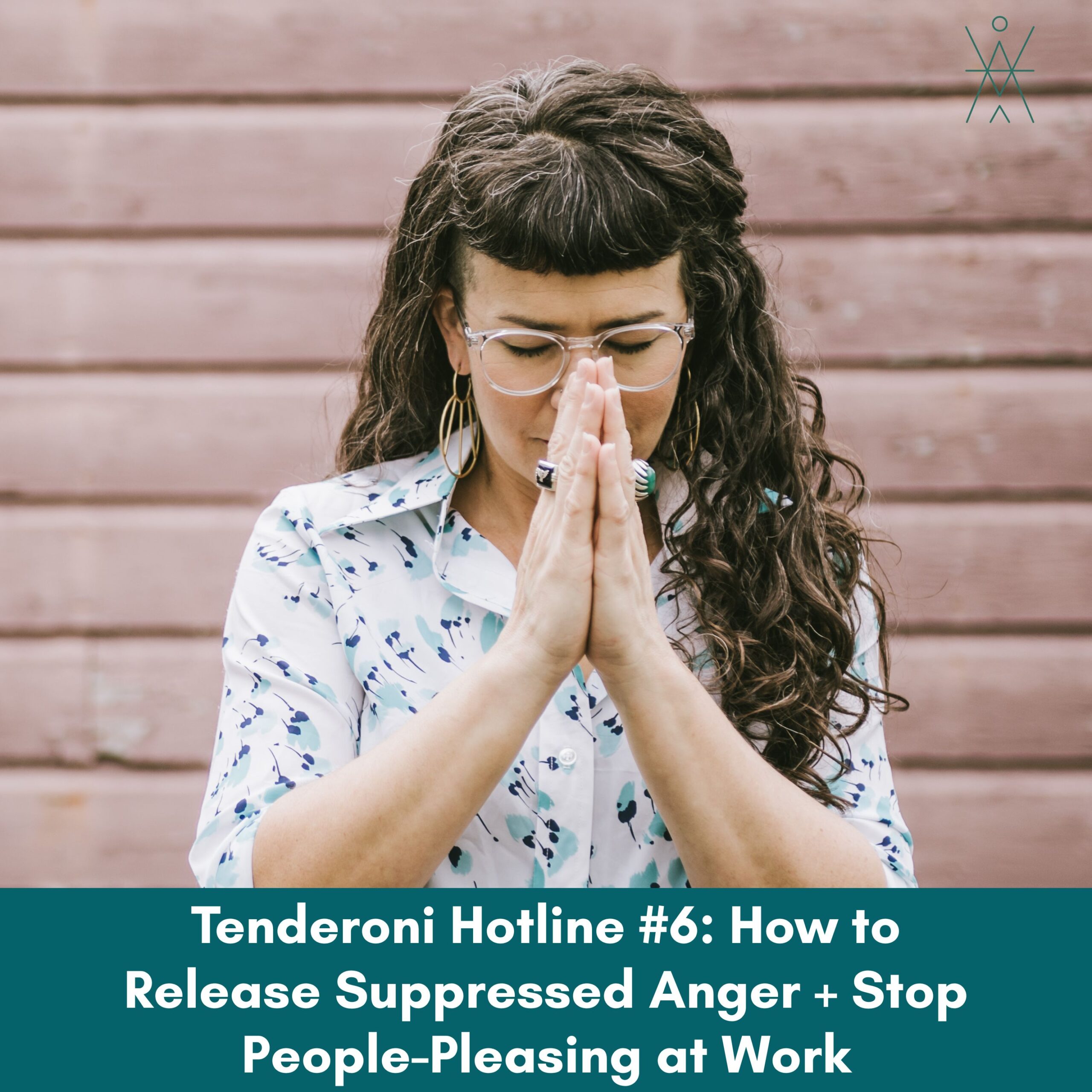Tenderoni Hotline #6: How to Release Suppressed Anger + Stop People-Pleasing at Work
Welcome back to another heartfelt installment of the Tenderoni Hotline, your weekly infusion of somatic support, nervous system insight, and loving feminist coaching. Every Tuesday, I answer your real-life questions, the tender and brave ones, drawing from my work in Anchored, The Somatic Studio, and your beautiful messages. If you have a question you'd like me to answer, send it to podcast@beatrizalbina.com and I’ll add it to the list for a future episode. Let’s get into it.

Question 1: How do I release years of suppressed anger when my body feels too weak to hold it all?
Oh my love, this is such a tender and potent question. When anger has been buried for years or even decades, your body has been carrying that unprocessed charge the entire time.
And while anger is life force, when you’re exhausted, burnt out, or simply not resourced, your system might not be able to let it all out safely at once. That’s not a flaw. That’s physiology. This is why I teach titration (doing a little at a time) and pendulation (moving between a challenging sensation and a soothing one). Think of your anger like a frozen pipe. If you blast it with boiling water, it bursts. But if you warm it slowly and gently, the flow returns without damage. This is how we work with anger in a nervous-system-honoring way.
Why Catharsis Isn’t the Goal
We often romanticize catharsis: the big sob, the pillow scream, the “I let it all out” moment. And while it can bring temporary relief, without enough nervous system capacity underneath it, catharsis often overwhelms us. It floods the body with energy we don’t know how to process, leaving us buzzy, dysregulated, or emotionally wrung out.
As I say in Anchored: Catharsis is cute. Integration changes lives.
Our goal isn’t just to feel a big emotion. It’s to build your capacity to stay with it, integrate it, and not abandon yourself in the process. So instead of chasing the explosion, we return to slow, steady, grounded practices:
- Orient your nervous system: Look around your space, feel your feet, hold a comforting object.
- Work with just a little anger: in your jaw, your belly, your chest.
- Let yourself exhale audibly, move your hands, push gently on a surface. Micro-movements matter.
- Pause. Re-orient. Return to your center.
Over time, your body learns: I can be with this. I can survive my feelings. I don’t have to run. And if your anger is tied to trauma, my love, please seek support from a licensed trauma therapist. Coaches like me can walk alongside you, but trauma needs trauma-informed care first.
Question 2: How Workplaces Reinforce Emotional Outsourcing
Let’s talk about emotional outsourcing—the brilliant, body-based habit of sourcing your sense of safety, worth, and belonging from other people. And wow, does the workplace love to reward these patterns.
Workplaces often celebrate:
- Overfunctioning
- Overpreparing
- People pleasing
- Being “the reliable one"
And if you’re a high achiever or perfectionist, you might be praised for the very habits that are burning you out. You’re constantly reading the room, managing other people’s emotions, and pushing your own needs to the side. This is emotional outsourcing in real time.
What It Feels Like in the Body
- Your boss sighs, and your chest tightens.
- A coworker’s tone shifts, and you spiral.
- Someone praises you, and you finally exhale.
These are signs that your nervous system is still wired to find safety through others, rather than within yourself. And I want to be clear. This isn’t because you’re weak. It’s because you’re a mammal. Your body is doing exactly what it was designed to do under threat, seek connection to survive.
How to Start Reclaiming Safety
Let’s be real. Saying “I’m safe even if someone’s displeased with me” often feels like a lie. Your body doesn’t believe it. So instead, try this bridge thought: “I believe it could be possible to feel safe enough, even if someone is displeased.” This gives your body room to explore safety, rather than trying to force it.
And ask yourself in those activated moments:
“Whose approval am I chasing right now?”
“What am I trying to prove and to whom?”
The goal isn’t to stop caring. It’s to care without caretaking. To give from overflow, not depletion. To stay anchored in your own truth, even when a room demands you disappear.
A Final Loving Reminder
If you’ve spent years performing perfection, earning love, outsourcing your needs, that wasn’t a failure. That was survival. That was brilliance. Now, you get to return to yourself. You get to build capacity slowly. You get to pause, breathe, orient, and feel the micro-movements of change. You don’t need to flood your system to be free. You just need to stay with yourself long enough to integrate what’s true.
There’s no trophy for freaking your nervous system out. There is deep healing in the slow, steady return to your own center. And that’s what we’re doing here, together.
Want to Go Deeper?
Grab your copy of End Emotional Outsourcing to learn how to stop performing safety and start actually feeling it.
You’ll get real tools, somatic practices, and feminist coaching support to help you come home to yourself, one nervous-system-loving step at a time.
And if you want my free orienting audio and grounding meditations to support your daily practice, head to beatrizAlbina.com/free here.
Tags: nervous system regulation, emotional outsourcing, suppressed anger, somatic healing, perfectionism, people pleasing, trauma healing, boundaries, self trust, somatic experiencing, catharsis vs integration, nervous system support, workplace burnout
